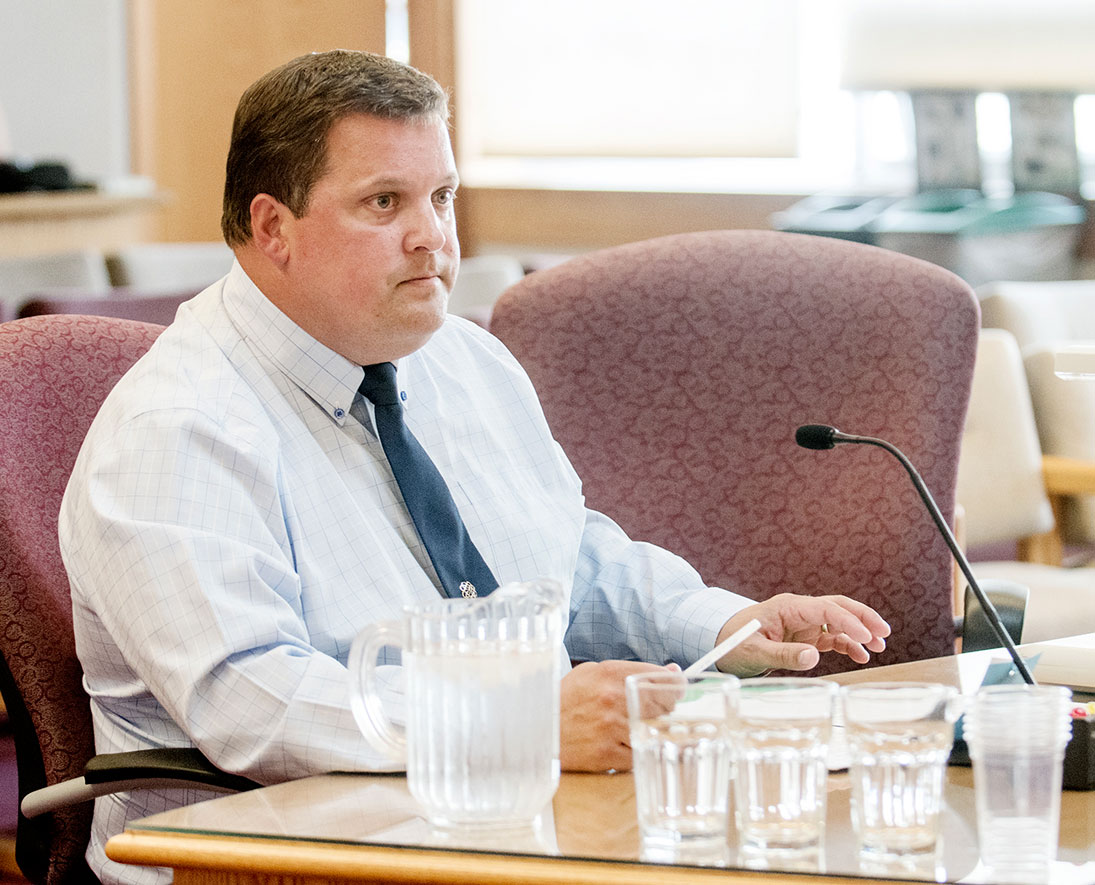
Photo by Whitehorse Star
Pat Ross

Photo by Whitehorse Star
Pat Ross
Companies installing cell towers are now subject to a city policy along with the federal guidelines that must be met.
Companies installing cell towers are now subject to a city policy along with the federal guidelines that must be met.
Council voted in favour of adopting the policy last Monday after having deferred the decision in December 2017. It made that decision in order for more consultation to take place with the industry.
“Administration conducted consultation over the month of January through emails and telephone calls to local communication antenna installers and created a city web page containing the draft policy and the background information describing the purpose of the policy,” Pat Ross, the lands and building manager, stated in a report to council.
He went on to highlight Total North Communications Ltd., Bell Mobility, Northwestel Inc., Ice Wireless, Triniti Technology, and WesTower Communications were all contacted directly about the policy.
No comments came from any of those companies by the Jan. 31 deadline for submissions.
Only one comment came in from the general public. It focused on the importance of monitoring the potential health impacts that may be caused by continued exposure to levels of radio frequency.
As Ross pointed out though: “It is noted in the draft policy that the city does not assess any submission for an antenna structure with respect to health and radio frequency exposure issues or any other non-placement or non-design related issues.
“The city evaluates submissions based on land use planning criteria. Health Canada sets radio frequency exposure guidelines, identified in Safety Code 6, to establish safety limits for human exposure to radio frequency electromagnetic energy.
“Concerns regarding health issues related to cell phones, cell towers and radio frequency exposure guidelines (Safety Code 6) should be directed to Health Canada.”
At the Feb. 19 council meeting, Coun. Rob Fendrick asked Ross about possibilities on why the city didn’t get a lot of feedback.
Ross pointed out that most of what is covered in the policy is also outlined in existing Industry Canada standards.
Industry Canada has encouraged local land-use authorities – such as municipalities like Whitehorse – to develop their own protocols around applications for antenna structures.
“The protocols may also contain specific requirements for public consultation, co-location investigation and tower design criteria,” it was highlighted in the December report to council detailing the then-draft policy.
The policy allows the city to “review and comment on the proposed location of a telecommunication antenna structure and aspects of its design, including, but not limited to height, colour, type, number of antennae to be placed on the structure, screening of any equipment compound, the design and materials to be used for any equipment storage shed, the potential for co-location of other proponents on the structure, and compliance with applicable city bylaws.
“Based on this review, a letter of support or non-support is issued by administration (to Industry Canada).”
The policy outlines three types of submissions and timelines for evaluation.
Type A submissions are for larger structures deemed to have potential impacts for the community, environment and the “existing urban fabric” of the city.
Type A submissions would be for any tower within 200 metres of residential areas; or
• any tower that would be placed in areas of environmental, historic, strategic or operational importance under city policies or bylaws;
• any proposal to raise an existing tower’s height by 25 per cent; or;
• any structure not meeting the criteria of the other categories.
Type A applications would have a longer consultation period, including a requirement for a public meeting, and be processed by the city in 45 days.
Type B would be those anticipated to have low or no impacts on the community.
They would include those on roof tops or high-rise buildings with the roof tops required to be higher than adjacent homes (or the city may require more public consultation); or
• on light poles, on existing utility towers or similar structures, on towers that are fewer than 15 metres high and not identified as a Type A applications.
Public consultation would not be required for Type B submissions.
There would be a 21-day processing time by the city for those submissions.
Finally, Type C submissions would be those that would have a limited operational time frame and have no or negligible adverse impact on the community.
They would include submissions for temporary telecommunications structures.
Those would encompass:
• Cell On Wheels portable stations that provide temporary cell service – for no longer than three months;
• extension requests beyond the initial three month period;
• structures to be used for special events;
• those used for urgent or emergency events;
• the co-location of antennae on an existing tower where a height increase is not required; and
• the addition of new shelters, cabinets and other enclosures to house equipment.
Written notification to the city would be required allowing the city 10 days’ response time before the installation.
The exception would be in the case of emergency situations when they could be installed without written notification.
“As a courtesy, the city encourages a verbal notification in these circumstances, to be completed within 24 hours of the deployment of the telecommunications structure,” the policy states of emergency installations.
Council was unanimous in approving the policy last Monday, with Fendrick attending the session by conference call.
In order to encourage thoughtful and responsible discussion, website comments will not be visible until a moderator approves them. Please add comments judiciously and refrain from maligning any individual or institution. Read about our user comment and privacy policies.
Your name and email address are required before your comment is posted. Otherwise, your comment will not be posted.
Be the first to comment